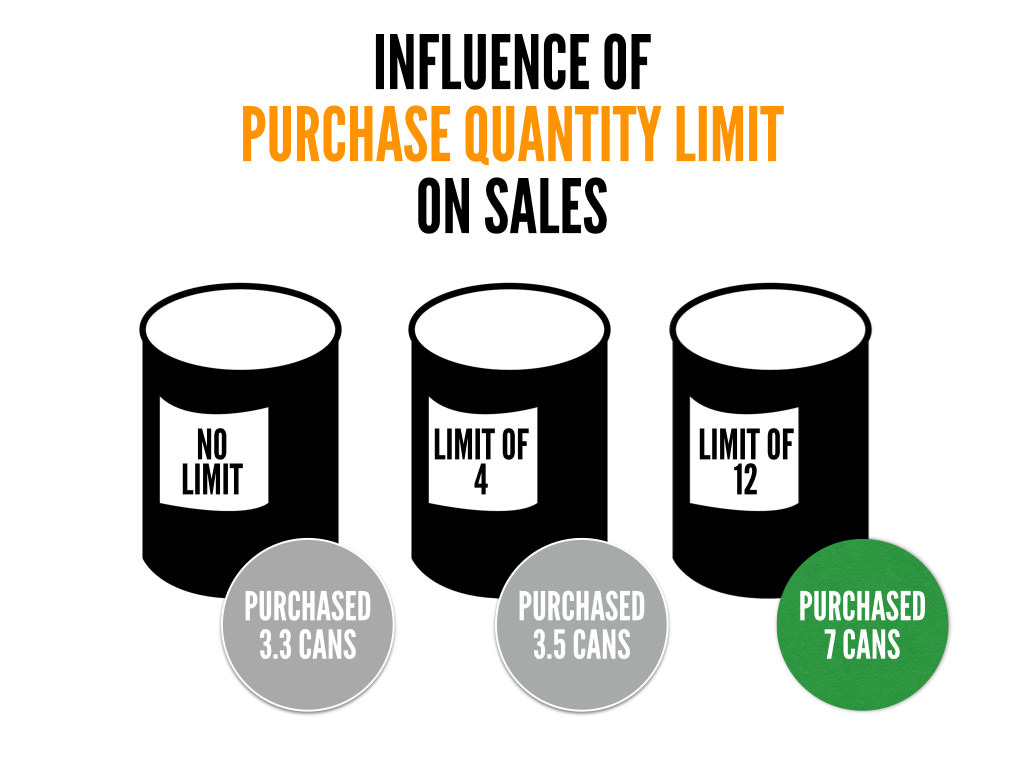Consider the following scenario:
You go to the store to buy soup. You notice that cans of soup are marked down from $.89 to $.79. Below the price is fine print that says “Limit of 4.”. You make your choice and head to the register.
Now the question is…does the purchase quantity limit (ex. limit of 4) influence how many cans you buy?
Researchers, including me, have been studying numbers and decision-making for many years. A theory known as anchoring suggests that people see numbers and use them as a basis for decision-making. Marketing researchers set out to determine whether the theory of anchoring affects purchase quantities.
Professors worked with a grocery store to set up a scenario similar to the one discussed above. Customers walked in and saw the soup display with a pricing that referenced either no purchase quantity limit, a limit of 4, or a limit of 12. Customers who saw no reference to any limit purchased (on average) 3.3 cans of soup while customers who saw a limit of 4 bought 3.5 cans of soup. That might not seem like a lot but let’s assume you’re a soup company or grocery chain with 1,000,000 customers. That small change could result in selling 200,000 more cans of soup. At $.79 per can of soup, that one small change could result in an additional $158,000 of revenue. Where it gets even more interesting is the “Limit of 12” scenario in which customers, on average, purchased 7.0 cans of soup. That is a pretty staggering difference that could result in millions of dollars in additional sales.

The reasoning for this behavior is attributed to anchoring in which customers see a number (ex. limit of 12) and use that as a guide for how many cans of soup they should buy. Am I suggesting you run out and change all your purchase quantity limits? Not necessarily. Am I suggesting that you think about the effect of purchase quantity limits on your business? Yes.
How might purchase quantity limits affect your business or marketing? Does your business use quantity limits? Let me know in the comments!
Sources/Credits:
- Wansink, B., Kent, R. J., & Hoch, S. J. (1998). An Anchoring and Adjustment Model of Purchase Quantity Decisions. Journal of Marketing Research, 35(1), 71. doi:10.2307/3151931
- Price Tag designed by Atelier Iceberg from The Noun Project
Comments
6 responses to “Limit of 4 or Limit of 8? How anchoring affects the things we buy.”
[…] academic research suggests this same effect can occur with purchase quantity limits or, in the case of this post, when big or small thoughts are cued by a physical action. How big of […]
[…] matters. Numbers matter. Very subtle changes can result in huge differences in how consumers behavior. The two theories […]
[…] How do purchase quantity limits affect consumer behavior? […]
[…] have talked about anchoring a couple times on my blog so I’ll save a long explanation. The general idea is you are priming someone to think big or […]
[…] point (0 versus 100,000) would likely result in an anchoring effect. I have talked about this in past posts, but anchoring essentially occurs when a person sees a number and uses it as a basis for judgment. […]
[…] anchoring. The numbers used in the question (78.8% and 21.2%) may have inadvertently, and unequally, anchored people. In other words, people might interpret 78.8 and 21.2 in unique ways. For example, maybe the ones […]